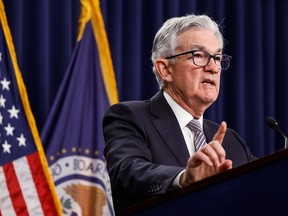Washington D.C. — The Federal Reserve cut its key interest rate on Wednesday by a quarter-point, marking its third reduction this year.
The decision was made in an effort to stabilize the economy and mitigate the effects of inflation. However, the Fed also signaled that it will be slowing down its pace of rate reductions, citing concerns about overheating the economy and reigniting inflation.
The Decision
In a statement, the Federal Reserve noted that "the Committee decided to lower the target range for the federal funds rate by 25 basis points, effective January [insert date]." This brings the target range to 3.75% – 4%.
The decision was made in light of recent economic data, which has shown signs of a slowdown in growth and an increase in unemployment. The Fed also noted that inflation remains below its 2% target rate, but is expected to rise slightly over the next year.
Why Slower Rate Reductions?
The Federal Reserve’s decision to slow down its pace of rate reductions reflects concerns about the potential for overheating the economy and reigniting inflation. Some economists have argued that further rate cuts could lead to excessive borrowing and spending, which would drive up prices and undermine economic growth.
Others have noted that the Fed’s decision to keep rates low for an extended period may be contributing to a surge in asset prices, particularly in the stock market. This has raised concerns about the potential for a correction or even a bubble in certain sectors.
The Impact of Trump’s Policies
The uncertainty surrounding President-elect Donald Trump’s policies has also played a role in the Fed’s decision to slow down its pace of rate reductions. While some analysts believe that Trump’s proposals, such as tax cuts and deregulation, could stimulate growth and lead to higher interest rates, others have argued that his plans for tariffs and mass deportations could accelerate inflation.
The Federal Reserve has said it will be watching the impact of Trump’s policies on the economy closely and will adjust its rate decisions accordingly. However, it remains uncertain how these policies will ultimately affect the economy.
The Economic Outlook
The quarterly economic projections released by the Fed on Wednesday reflect a mixed picture for the economy. Policymakers expect annual inflation to rise slightly from 2.3% now to 2.5% by the end of 2025, while the unemployment rate is expected to inch up from 4.2% now to 4.3% by the end of next year.
While these projections suggest that the economy remains on a stable path, they also highlight the challenges facing policymakers as they seek to balance growth and inflation. The Fed’s decision to slow down its pace of rate reductions reflects this complexity and underscores the importance of careful consideration in setting monetary policy.
Reactions from Economists
The decision by the Federal Reserve has been met with mixed reactions from economists. Some have welcomed the move, noting that it will help stabilize the economy and mitigate the effects of inflation. Others have expressed concern about the potential for overheating and the impact on asset prices.
Subadra Rajappa, head of U.S. rates strategy at Societe Generale, noted: "I’ve got the least amount of conviction about what will happen with the economy over the next 12 months than I’ve had in years. This is going to be a work in progress as things evolve."
Conclusion
The Federal Reserve’s decision to cut its key interest rate by a quarter-point reflects a cautious approach to monetary policy, driven by concerns about overheating and inflation. While this move may provide some stability for the economy, it also underscores the complexity of setting monetary policy in a rapidly changing economic landscape.
As policymakers continue to navigate these challenges, they will need to balance competing priorities and adapt to new information as it becomes available. The outcome is far from certain, but one thing is clear: the Federal Reserve’s decision will have significant implications for the economy and financial markets.
Recommended Resources
- Federal Reserve Economic Data (FRED): A comprehensive database of economic data provided by the Federal Reserve Bank of St. Louis.
- Bureau of Labor Statistics (BLS): A source for labor market statistics, including employment rates and inflation measures.
- IMF World Economic Outlook: A publication from the International Monetary Fund that provides forecasts and analysis on global economic trends.
Related Stories
- The Federal Reserve Cuts Interest Rate by Quarter Point, Signaling Slower Rate Reductions Ahead
- Traders Boost Bets on Fed Cut in December After Inflation Data
- Bank of Canada, Fed Should Focus on Rising Delinquencies
